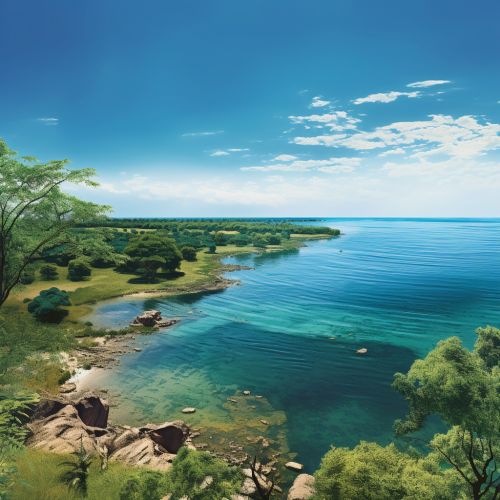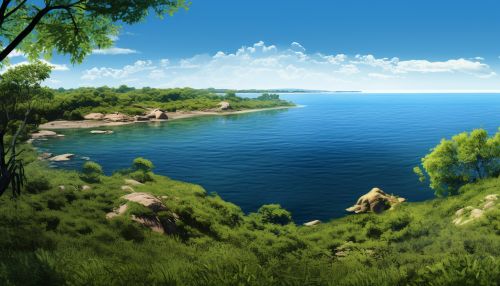Great Lakes of Africa
Overview
The Great Lakes of Africa are a series of lakes located in the East African Rift Valley, which is part of the larger African Rift System. These lakes are some of the deepest and oldest in the world, providing a unique habitat for a diverse range of flora and fauna. The lakes play a crucial role in the economies of the surrounding countries, providing water for irrigation, fishing, and hydroelectric power.


Geography and Formation
The Great Lakes of Africa are located in East Africa, within the East African Rift Valley. This rift valley is a part of the larger African Rift System, which stretches from the Red Sea in the north to Mozambique in the south. The formation of these lakes can be traced back to the tectonic activities associated with the rifting of the African continent.
The lakes are situated at high altitudes, with many of them lying more than 1,000 meters above sea level. The lakes are also some of the deepest in the world, with Lake Tanganyika, in particular, reaching depths of over 1,470 meters.
The Lakes
The Great Lakes of Africa include some of the largest and deepest lakes in the world. These include:
Lake Victoria
Lake Victoria is the largest lake in Africa and the second-largest freshwater lake in the world by surface area. It is named after Queen Victoria of the United Kingdom. The lake is shared by three countries: Kenya, Uganda, and Tanzania. Lake Victoria is the source of the White Nile, one of the main tributaries of the Nile River.
Lake Tanganyika
Lake Tanganyika is the second largest of the African Great Lakes and the second deepest freshwater lake in the world. It is located between four countries: Burundi, the Democratic Republic of Congo, Tanzania, and Zambia. The lake is known for its unique biodiversity, with more than 350 different species of fish.
Lake Malawi
Lake Malawi, also known as Lake Nyasa, is the third largest and second deepest lake in Africa. It is located between Malawi, Mozambique, and Tanzania. The lake is known for its high fish diversity, particularly its numerous species of cichlids.
Other Lakes
Other significant lakes in the region include Lake Turkana, the world's largest permanent desert lake and the world's largest alkaline lake, Lake Albert, and Lake Edward.
Biodiversity
The Great Lakes of Africa are known for their high biodiversity, particularly in terms of fish species. The lakes are home to numerous endemic species, particularly cichlid fish, which have undergone an extensive adaptive radiation in these lakes.
In addition to their rich aquatic life, the lakes also support a variety of bird species, mammals, and reptiles. The surrounding areas of the lakes are also rich in biodiversity, with numerous national parks and protected areas established to protect these unique ecosystems.
Economic Importance
The Great Lakes of Africa play a crucial role in the economies of the surrounding countries. They provide water for irrigation, supporting agriculture in the region. The lakes also support local fishing industries, providing a source of food and income for millions of people. Furthermore, several of the lakes are utilized for hydroelectric power production, contributing to the energy supplies of the region.
Environmental Issues
Despite their importance, the Great Lakes of Africa face a number of environmental threats. These include pollution from industrial and agricultural runoff, overfishing, and the introduction of invasive species. Climate change also poses a significant threat, with rising temperatures and changing rainfall patterns potentially impacting the ecosystems of the lakes.
